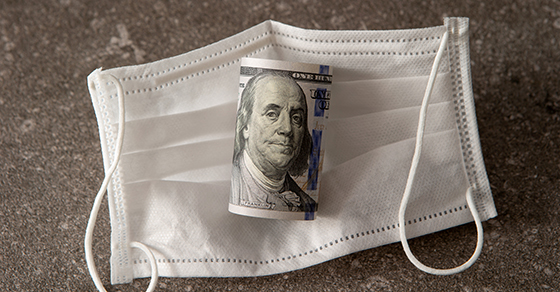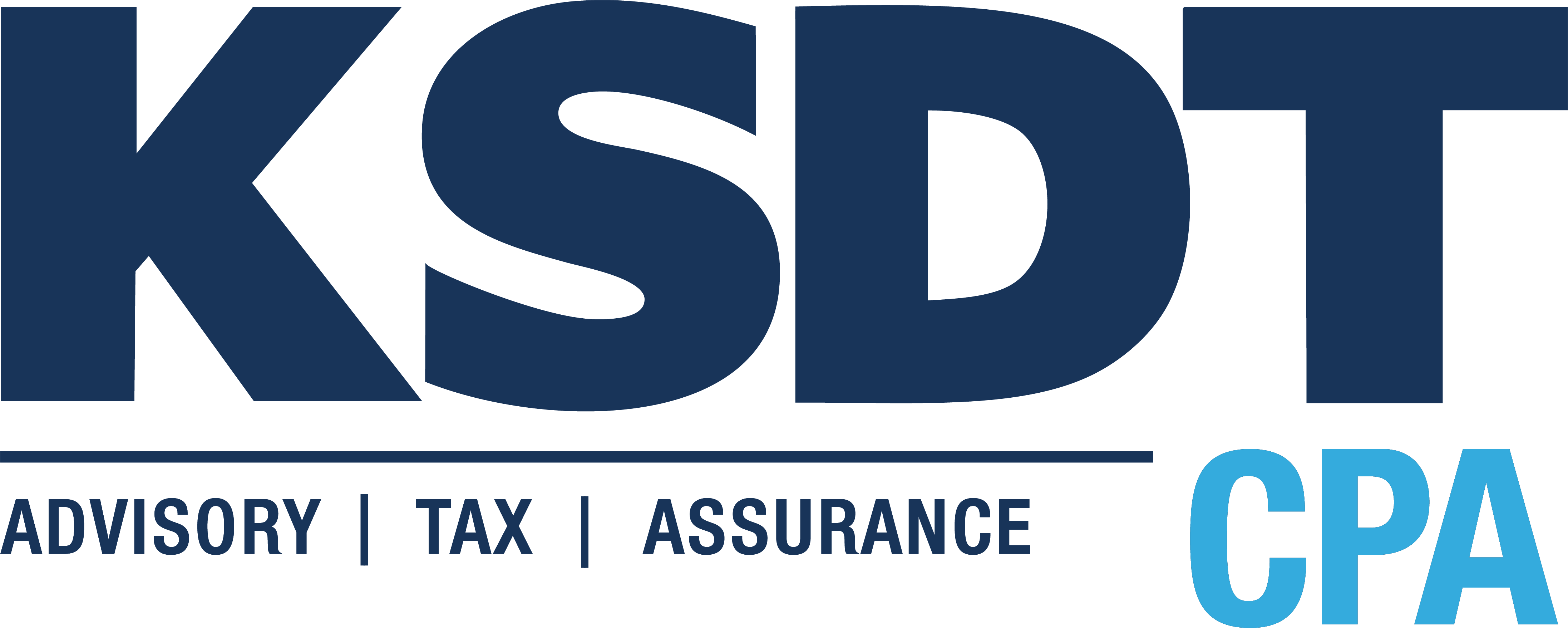COVID-19 relief bill addresses key PPP issues
The U.S. Senate and House of Representatives overwhelmingly passed a $900 billion COVID-19 relief bill Monday night that provides $600 stimulus payments to individuals, adds $300 to extended weekly unemployment benefits, and provides more than $300 billion in aid for small businesses.
The legislation, the Consolidated Appropriations Act, 2021, also ensures tax deductibility for business expenses paid with forgiven Paycheck Protection Program (PPP) loans, provides fresh PPP funding, makes Sec. 501(c)(6) not-for-profit organizations eligible for loans for the first time, and offers businesses facing severe revenue reductions the opportunity to apply for a second loan.
The Senate approved the bill with a 92-6 vote at about 11:45 p.m. Monday, just a couple of hours after the House approved it 359-53. The measure now goes to President Donald Trump, who is expected to sign it into law.
The COVID-19 relief package is tied to a $1.4 trillion resolution to fund the government through September 2021.
Key provisions in the bill include:
- $325 billion in aid for small businesses struggling after nine months of pandemic-induced economic hardships. The bill provides more than $284 billion to the U.S. Small Business Association (SBA) for first and second PPP forgivable small business loans and allocates $20 billion to provide Economic Injury Disaster Loan (EIDL) Grants to businesses in low-income communities. In addition, shuttered live venues, independent movie theaters, and cultural institutions will have access to $15 billion in dedicated funding while $12 billion will be set aside to help business in low-income and minority communities.
- $166 billion for economic impact payments of $600 for individuals making up to $75,000 per year and $1,200 for married couples making up to $150,000 per year, as well as a $600 payment for each child dependent.
- $120 billion to provide workers receiving unemployment benefits a $300 per week supplement from Dec. 26 until March 14, 2021. This bill also extends the Pandemic Unemployment Assistance (PUA) program, with expanded coverage to the self-employed, gig workers, and others in nontraditional employment, and the Pandemic Emergency Unemployment Compensation (PEUC) program, which provides additional weeks of federally funded unemployment benefits to individuals who exhaust their regular state benefits.
- $25 billion in emergency rental aid and an extension of the national eviction moratorium through Jan. 31, 2021.
- $45 billion in transportation funding, including $16 billion for airlines, $14 billion for transit systems, $10 billion for state highways, $2 billion each for airports and intercity buses, and $1 billion for Amtrak.
- $82 billion in funding for colleges and schools, including support for HVAC repair and replacement to mitigate virus transmission, and $10 billion in child care assistance.
- $22 billion for health-related expenses incurred by state, local, Tribal, and territorial governments.
- $13 billion for emergency food assistance, including a 15% increase for six months in Supplemental Nutrition Assistance Program benefits.
- $7 billion for broadband expansion.
The bill also extends the employee retention tax credit and several expiring tax provisions and temporarily allows a 100% business expense deduction for meals (rather than the current 50%) as long as the expense is for food or beverages provided by a restaurant. This provision is effective for expenses incurred after Dec. 31, 2020, and expires at the end of 2022.
Breaking down the PPP provisions
The return of the PPP is of particular interest to accountants, who played a significant role in helping millions of small businesses acquire $525 billion in forgivable loans during the five months the program was accepting applications, according to SBA reporting. The new round of PPP, or PPP2 as some are calling it, contains many similarities to the first round of the PPP but also has several important differences. The following is a high-level view of the PPP provisions.
Who is eligible to apply
PPP2 loans will be available to first-time qualified borrowers and, for the first time, to businesses that previously received a PPP loan. Specifically, previous PPP recipients may apply for another loan of up to $2 million, provided they:
- Have 300 or fewer employees.
- Have used or will use the full amount of their first PPP loan.
- Can show a 25% gross revenue decline in any 2020 quarter compared with the same quarter in 2019.
PPP2 also makes the forgivable loans available to Sec. 501(c)(6) business leagues, such as chambers of commerce, visitors’ bureaus, etc., and “destination marketing organizations” (as defined in the act), provided they have 300 or fewer employees and do not receive more than 15% of receipts from lobbying. The lobbying activities must comprise no more than 15% of the organization’s total activities and have cost no more than $1 million during the most recent tax year that ended prior to Feb. 15, 2020.
- PPP2 will also permit first-time borrowers from the following groups:
- Businesses with 500 or fewer employees that are eligible for other SBA 7(a) loans.
- Sole proprietors, independent contractors, and eligible self-employed individuals.
- Not-for-profits, including churches.
- Accommodation and food services operations (those with North American Industry Classification System (NAICS) codes starting with 72) with fewer than 300 employees per physical location.
- The bill allows borrowers that returned all or part of a previous PPP loan to reapply for the maximum amount available to them.
PPP loan terms
As with PPP1, the costs eligible for loan forgiveness in PPP2 include payroll, rent, covered mortgage interest, and utilities. PPP2 also makes the following potentially forgivable:
- Covered worker protection and facility modification expenditures, including personal protective equipment, to comply with COVID-19 federal health and safety guidelines.
- Expenditures to suppliers that are essential at the time of purchase to the recipient’s current operations.
- Covered operating costs such as software and cloud computing services and accounting needs.
To be eligible for full loan forgiveness, PPP borrowers will have to spend no less than 60% of the funds on payroll over a covered period of either eight or 24 weeks — the same parameters PPP1 had when it stopped accepting applications in August.
PPP borrowers may receive a loan amount of up to 2.5 times their average monthly payroll costs in the year prior to the loan or the calendar year, the same as with PPP1, but the maximum loan amount has been cut from $10 million in the first round to the previously mentioned $2 million maximum. PPP borrowers with NAICS codes starting with 72 (hotels and restaurants) can get up to 3.5 times their average monthly payroll costs, again subject to a $2 million maximum.
Simplified application and other terms of note
The new COVID-19 relief bill also:
- Creates a simplified forgiveness application process for loans of $150,000 or less. Specifically, a borrower shall receive forgiveness if a borrower signs and submits to the lender a certification that is not more than one page in length, includes a description of the number of employees the borrower was able to retain because of the loan, the estimated total amount of the loan spent on payroll costs, and the total loan amount. The SBA must create the simplified application form within 24 days of the bill’s enactment and may not require additional materials unless necessary to substantiate revenue loss requirements or satisfy relevant statutory or regulatory requirements. Borrowers are required to retain relevant records related to employment for four years and other records for three years, as the SBA may review and audit these loans to check for fraud.
- Repeals the requirement that PPP borrowers deduct the amount of any EIDL advance from their PPP forgiveness amount.
- Includes set-asides to support first- and second-time PPP borrowers with 10 or fewer employees, first-time PPP borrowers that have recently been made eligible, and for loans made by community lenders.
Tax deductibility for PPP expenses
The bill also specifies that business expenses paid with forgiven PPP loans are tax-deductible. This supersedes IRS guidance that such expenses could not be deducted and brings the policy in line with what the AICPA and hundreds of other business associations have argued was Congress’s intent when it created the original PPP as part of the $2 trillion Coronavirus Aid, Relief, and Economic Security (CARES) Act, P.L. 116-136 (see the Dec. 3 letter from the AICPA and state societies to congressional leaders).
The COVID-19 relief bill clarifies that “no deduction shall be denied, no tax attribute shall be reduced, and no basis increase shall be denied, by reason of the exclusion from gross income provided” by Section 1106 of the CARES Act (which has been redesignated as Section 7A of the Small Business Act). This provision applies to loans under both the original PPP and subsequent PPP loans.
While the CARES Act excluded PPP loan forgiveness from gross income, it did not specifically address whether the expenses used to achieve that loan forgiveness would continue to be deductible, even though they would otherwise be deductible. In April, the IRS issued Notice 2020-32, which stated that no deduction would be allowed under the Internal Revenue Code for an expense that is otherwise deductible if the payment of the expense results in forgiveness of a PPP loan because the income associated with the forgiveness is excluded from gross income for purposes of the Code under CARES Act Section 1106(i).
In November, the IRS then expanded on this position by issuing Rev. Rul. 2020-27, which held that a taxpayer computing taxable income on the basis of a calendar year could not deduct eligible expenses in its 2020 tax year if, at the end of the tax year, the taxpayer had a reasonable expectation of reimbursement in the form of loan forgiveness on the basis of eligible expenses paid or incurred during the covered period. Treasury Secretary Steven Mnuchin also argued against businesses being able to deduct business expenses paid with forgiven, tax-free PPP funds, calling it an unwarranted double benefit for businesses.
The AICPA disputed this interpretation of the CARES Act loan forgiveness rules, arguing that it was not Congress’s intent to disallow the deduction of otherwise deductible expenses. Congress has now agreed with that position.
Source: Journal of Accountancy
By Jeff Drew
December 21, 2020
How Can We Help?
Call or email our team today
KSDT CPA is ready to navigate the process with you. Fill out the form below and our team will contact you shortly.


